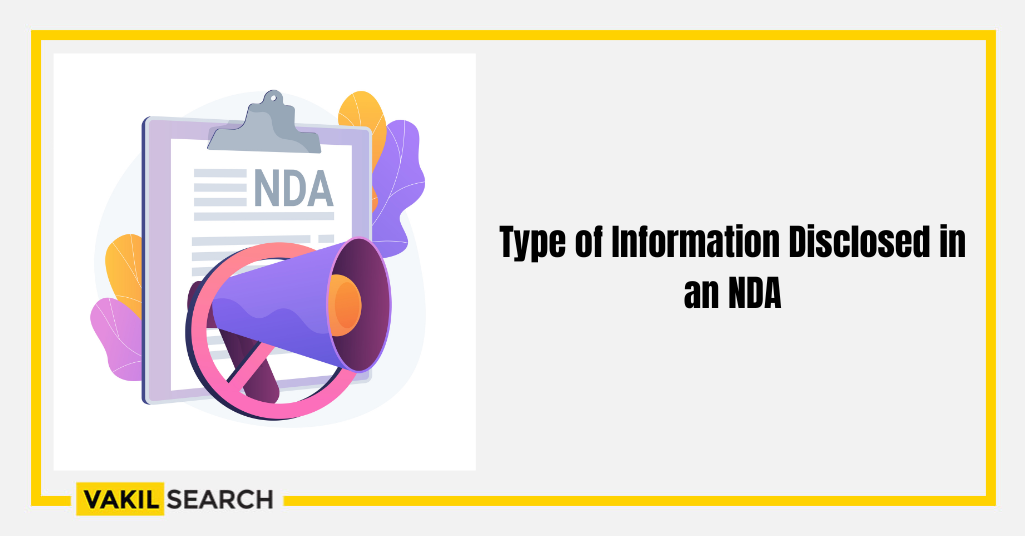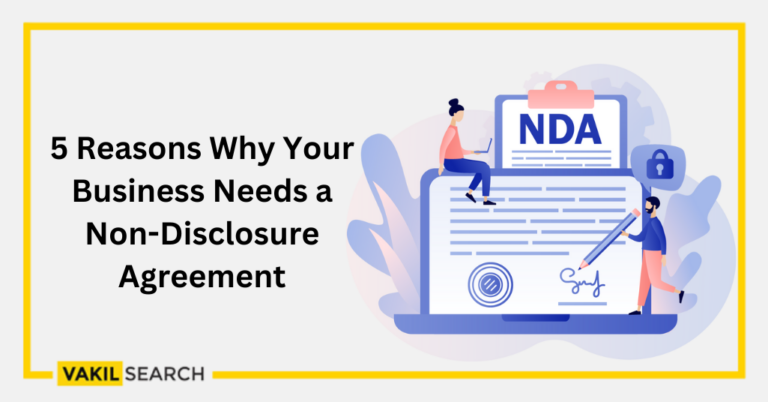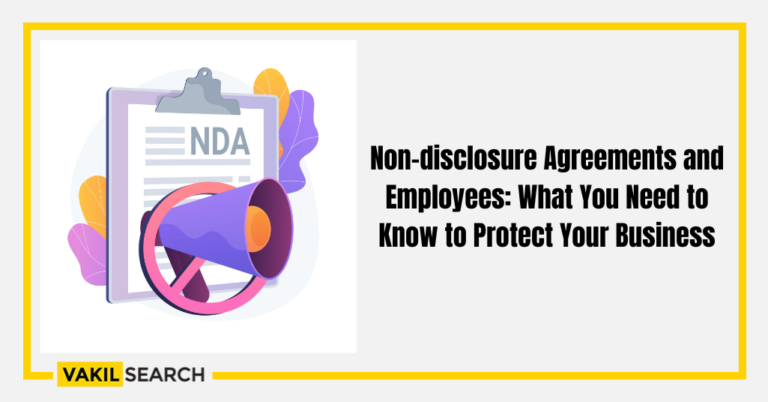An NDA agreement incorporates private data in an authoritative legitimate contract, limiting employees' from utilisation of company-owned secret data.
Overview
A non-disclosure agreement (NDA) is a legally binding contract that establishes a confidential relationship between two parties. It is understood that any sensitive information received will not be shared with anybody else by the person or parties that sign the contract or agreement. An NDA agreement is frequently referred to as a secrecy pact.
The use of non-disclosure agreements is common when companies deal with other organisations. They let the parties share crucial information without the risk of it coming into the hands of competitors or competitors’ allies. As a result, the term “mutual non-disclosure agreement” is used to describe this arrangement.
While usually referred to as “boilerplate” and signed after quick scrutiny (if any), nondisclosure agreements (NDAs) can take on a variety of forms and should be customised to your individual situation. Several considerations should be taken into consideration while signing or drafting an NDA.
Non Disclosure Agreement Requirements
Non-disclosure agreements (NDAs) can be customized to suit specific situations, but generally, there are six key elements that are considered essential in any NDA:
Participants to the Agreement
An NDA must clearly identify all parties involved in the agreement. This includes specifying the recipient of sensitive information, which can be an individual, employees of a specific company, or representatives of a company. It is important for the company to accurately define its own identity, especially in cases where there are complex legal structures, by determining the legal entity that owns the information.
Definition of Confidential Information
An NDA needs to explicitly state what information is considered confidential. It is the responsibility of the company to identify and specify the information that should not be shared. This can be challenging as the definition must be clear without disclosing the actual confidential information within the agreement. In some cases, companies may broadly assign confidentiality to a specific department or area, such as research and development.
Exclusions of Confidentiality
In certain situations, it may be beneficial to define what is not confidential. In these cases, the NDA states that all information shared with an external party is confidential, except for specific items determined by the company. This allows the company to identify any exceptions that should not be treated as confidential.
Appropriate Uses of Information
While some NDAs may state that no information is confidential, they may still restrict the external party’s use of the information provided. For example, a company may disclose operational processes but prohibit the recipient from sharing the information with competitors or using it for personal financial gain.
Time Period
In relation to research and development or other time-sensitive information, NDAs often define a time period during which the information remains confidential. As technology and markets evolve, certain information may lose its value or become widely known. Therefore, the NDA specifies when the information is no longer considered confidential.
Other/Miscellaneous Provisions
NDAs can be further customized to address industry-specific requirements or specific needs. Additional provisions may include specifying applicable state laws or regulations, determining the party responsible for attorney fees in case of a dispute, or outlining the course of action if the agreeing party fails to comply with the terms of the NDA.
It is important to note that different industries and organizations may have specific requirements or additional provisions to consider when drafting an NDA. Additionally, government agencies may impose more stringent requirements for protecting sensitive information.
Information Protected With NDA
Companies have a wide range of opportunities to protect themselves through the use of NDAs. These agreements are commonly employed to safeguard various types of information, including but not limited to:
Customer Information
NDAs can be used to protect important customer details, such as major customer names, contact information, and preferences. This can also encompass any direct communications between the company and its customers.
Financial Information
NDAs help ensure the confidentiality of specific financial data related to customers or any non-public financial information. This may include cost accounting information rather than financial accounting information.
Intellectual Property
NDAs are instrumental in safeguarding intellectual property assets, such as patents, copyrights, trade secrets, technologies, and any other proprietary knowledge or innovations that give a company a competitive edge.
Marketing Information
NDAs can protect sensitive marketing information, including processes, billing policies, pricing strategies, and advertising techniques that contribute to a company’s market positioning and competitive advantage.
Operating Information
NDAs are valuable for maintaining the confidentiality of internal operational data, such as employee records, supplier information, payroll details, and any other internal cost-related information that is not required to be publicly disclosed.
Key Elements of an NDA Agreement
Let’s go through some pointers to understand the key elements in an NDA.
- Not every business transaction or piece of information is protected under the Confidentiality Act
- It is crucial to note that nondisclosure agreements (NDAs) are frequently abused by business owners or entrepreneurs who do not understand their purpose or the context in which they are employed
- If you recruit a new employee who will only have access to publicly available information about your firm, it is quite meaningless to require them to sign a nondisclosure agreement
- Alternatively, if you deal with a smaller company whose employees would have access to your clientele and unpublished patents, you should absolutely need them to sign the agreement
In this section, we’ll go over some of the most critical components of an NDA agreement, as well as a few others that are dependent on the parties involved, which, perhaps, will give you a better sense of how long your agreement may last.
1. Definition of Confidential Information
As a result, without a clear definition of what is considered secret for the purposes of the agreement, a “Confidentiality Agreement” is essentially worthless in the first place.
The difficulty in coming up with a sound definition, in this case, is to be as particular as possible about the information you’re providing that is “privileged,” without being so specific that you mistakenly leave anything out of the equation. Consequently, under some conditions, a two-sentence definition may be sufficient.
In other cases, such as a complex merger involving numerous parties, the definition of secret information may take an inordinate amount of time.
2. Parties Involved in the Case
This is another condition in your NDA that appears to be basic, but you should definitely give it some thought before signing it.
It goes without saying that the agreement will be signed by at least two parties. Making sure you consider any third parties or affiliate parties that may be engaged as a vital element of the business process is where you need to be extra vigilant.
Consideration should be given to all stakeholders, including employees, contractors, accountants, attorneys, and others.
When it comes to length, this phrase shouldn’t be excessively long.
3. Terms & Duration of the Agreement
The provisions of the NDA might include both what you regard to be an appropriate use of the revealed information and the intended use of the sensitive information, which is sometimes separated into two different clauses in the NDA contract.
The term of the agreement refers to the time period during which the private information shall be returned as well as the time period during which the confidential information is no longer regarded to be secret. Get to know about Format for NDA Online.
4. Logistics
It is possible to prevent a little disagreement from becoming a full-blown legal nightmare by including articles in your contract that identify remedies, jurisdiction, and liability for legal bills, among other things, in the event of a dispute in the first place.
These provisions do not have to be complicated or lengthy, but they should be completely agreed upon by all parties. Their primary goal is to reach a fair Employee Agreement that encourages both parties to comply with the provisions of the agreement and fulfill their obligations under the agreement as agreed upon.
Your NDA agreement should never make it simple or favorable for one party to launch a lawsuit, and it should provide equal protection to each party in the event that a lawsuit is unavoidably filed against you.
Advantages of NDA
Confidentiality Protection
The primary advantage of an NDA is that it safeguards sensitive information about your company, such as R&D, patents, financial data, and negotiations. It ensures that this information remains confidential and prevents it from becoming public knowledge.
Clarity and Avoidance of Confusion
NDAs clearly outline what can and cannot be disclosed, reducing the chances of misunderstandings or unintended breaches. They provide explicit guidelines for protecting confidential information.
Cost-Effectiveness
NDAs are relatively low-cost and straightforward to create, often requiring only a signed agreement. They offer a cost-effective means of preserving the privacy of sensitive information.
Consequences and Deterrence
NDAs specify the consequences of breaching the agreement, serving as a deterrent for individuals who may consider disclosing protected information. This can help prevent leaks and maintain the confidentiality of sensitive data.
Trust and Comfort
By establishing a framework for confidentiality, NDAs can foster trust and provide a sense of security in relationships where sensitive information is shared. They create a foundation for open communication within the boundaries of confidentiality.
Disadvantages of NDA
Mistrust and Tone of Relationship
The use of NDAs can introduce an element of mistrust at the outset of a relationship, potentially setting a negative tone. Parties may feel uneasy or guarded, which can impact the dynamics of collaboration or hinder the development of strong partnerships.
Recruitment Challenges
Requiring prospective employees to sign NDAs can deter top-tier talent from joining a company. The limitations on discussing their work may discourage individuals who value open communication and professional networking.
Employee Experience and Trust
Requesting existing employees to sign NDAs, particularly for specific projects, may erode their sense of trust and loyalty. It can make them feel less trusted and affect their overall job satisfaction and engagement.
Potential Legal Consequences
Breaching an NDA can lead to legal disputes and lawsuits, which can be time-consuming, costly, and create stress for all parties involved. Handling breaches and enforcing NDA agreements can become a significant administrative burden.
|
Summary of Pros and Cons |
|
| Pros |
|
| Cons |
|
Key Things to be Considered Confidential: Intellectual Property
Let’s go through the key pointers to be considered confidential using intellectual property.
- These types of agreements were created in order to safeguard your intellectual property. Intellectual property is what distinguishes one firm from another and allows for healthy competition to exist
- Many firms rely on intellectual property to survive.
- As a result, organisations functioning in a competitive market should not overlook the need of protecting their intellectual property. Before you recruit or collaborate with someone, you should have a robust NDA agreement in hand
- In particular, businesses must utilise non-disclosure agreements (NDAs) throughout the hiring and onboarding processes to guarantee that their workers do not leak trade secrets (even if accidentally), or that they do not use what they learn to establish a competitive firm of their own
- Third parties, such as investors, who obtain access to sensitive information should be required to keep it strictly secret
- When you are in the research and development phase, you should need everyone engaged to sign a nondisclosure agreement. This is also true in the case of proposed mergers, acquisitions, or sales of businesses
In the event that nondisclosure agreements (NDAs) are not used successfully or information is mishandled, businesses may find themselves in the undesirable situation of having a rival discover what makes their firm lucrative and use the knowledge against them or back out of a transaction.
Exclusions of Confidentiality
Exclusions from the concept of private information are as widespread as the term itself. The recipient of sensitive information should make certain that suitable exclusions from the definition are made (which can be broader or narrower, depending on the party).
Typical exclusions include the following information:
- Is or becomes public for reasons other than the recipient’s violation of the agreement
- Before the disclosure, was already in the recipient’s possession or was available to the recipient on a non-confidential basis
- Is obtained from a third party who is not subject to separate confidentiality obligations to the other party
- Is created independently by the receiver without the use of sensitive information.
FAQ
What Happens If You Break a Non-Disclosure Agreement?
Generally, the consequences for breaking an NDA is that you may be sued. The outcome of the lawsuit can result in monetary fines, termination of employment, or the return of assets, depending on the terms agreed upon in the NDA.
How Long Does an NDA Last?
The duration of an NDA varies depending on the specific agreement. Typical timeframes range from one year to 10 years, although some NDAs may have indefinite durations, especially one which contains highly sensitive information.
How Much Does an NDA Cost?
The cost of creating an NDA varies depending on its complexity. Generally, the creation of an NDA can cost anywhere from Rs. 5,000 to Rs. 50,000 depending on the specific requirements and the scope of legal assistance needed.
What Happens if You Violate an NDA?
Violating an NDA by illegally disclosing confidential information can lead to lawsuits from the other party involved in the agreement. Legal action may include claims of breach of contract, copyright infringement, or breach of fiduciary duty.
Read More:-










